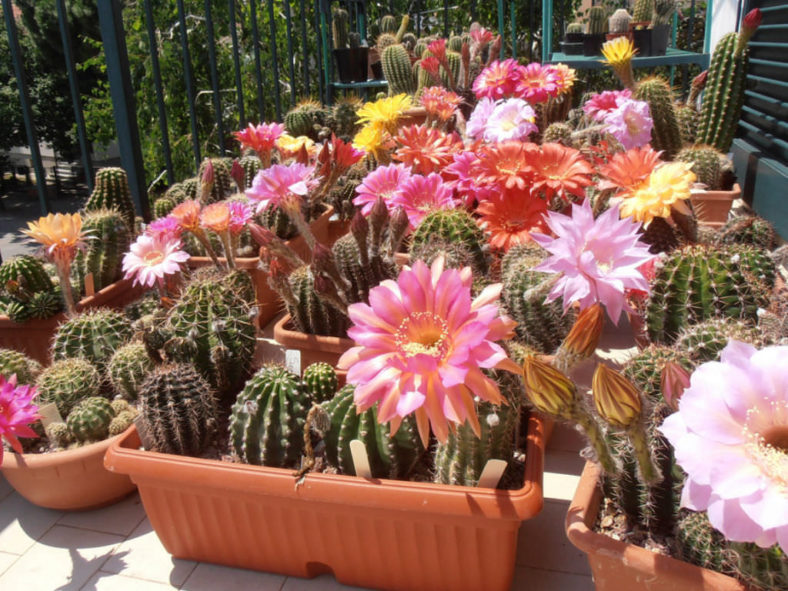Echinopsis is a genus of cacti that includes dozens of species from South America. This group includes large columnar cacti formerly in Trichocereus and smaller day-flowering species previously classified in Lobivia. The large columnar cacti are beautiful, but they are generally far too large for indoor cultivation. Therefore, only the smaller day-flowering species are grown indoors. These are generally small, round cacti with sharp spines and intensely colorful flowers. Extensive hybridizing has been done over the years to produce a variety of flower colors.
Growing Conditions
Light: Echnopsis cacti appreciate intense sun during the growing season. If possible, move plants outdoors, but acclimate to direct sunlight slowly to prevent scorching. In the winter, the perfect place is near the brightest window.
Water: Allow the soil mix to dry between waterings and water thoroughly. Excellent drainage is essential, so never let the pots sit in water. Suspend watering in the winter, but mist occasionally.
Soil: A rich, fast-draining cactus mix is ideal.
Fertilizer: Fertilize with a cacti fertilizer during the growing season. Suspend feeding during the dormant winter period.

Propagation
Echinopsis can be easily rooted from offsets that tend to cluster around the base of the mother plant.
Cut offsets close to the stem at the narrowest point. When rooting cacti from cuttings, let the fresh cutting dry on a paper towel, and cut the cacti at the narrowest place possible. After a few days to a few weeks, the cut surface should have dried and formed a callus or a slightly rough opening, depending on the size of the cut surface. Once the callus has formed, place the cutting in a rooting mixture of fast-draining soil. Keep the cutting barely moist and warm. New roots will develop in a few weeks, either around the vascular bundles or the cut areoles near the cut. Once new roots are visible, pot the plant as a typical cactus and move it into your collection.
Repotting
Repot as needed, preferably during the warm season. To repot a cactus, ensure the soil is dry before repotting, then gently remove the pot. Knock away the old soil from the roots, removing any rotted or dead roots. Treat any cuts with a fungicide. Place the plant in its new pot and backfill it with potting soil, spreading the roots as you repot. Let the plant dry for a week or so, then water lightly to reduce the risk of root rot. Be careful when handling Echinopsis cacti, as they have stiff spines.
Grower's Tips
If you can grow cacti and succulents successfully, you can likely grow the Echinopsis cacti without too much trouble. Like many cacti, they prefer a drying period between waterings, even when slightly wilted. When you water, however, you should water deeply. The plant will noticeably plump up. The cactus must not be exposed to prolonged dampness and standing water. Never let your cactus sit in a dish of water. Lastly, fertilize during the growing season for the best results.
Source: about.com
Links
- Back to genus Echinopsis
- Succupedia: Browse succulents by Scientific Name, Common Name, Genus, Family, USDA Hardiness Zone, Origin, or cacti by Genus